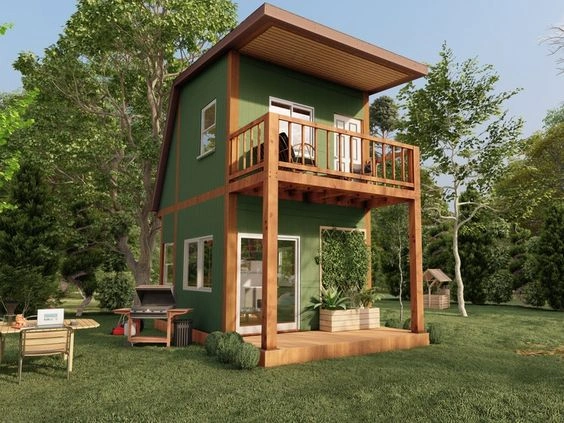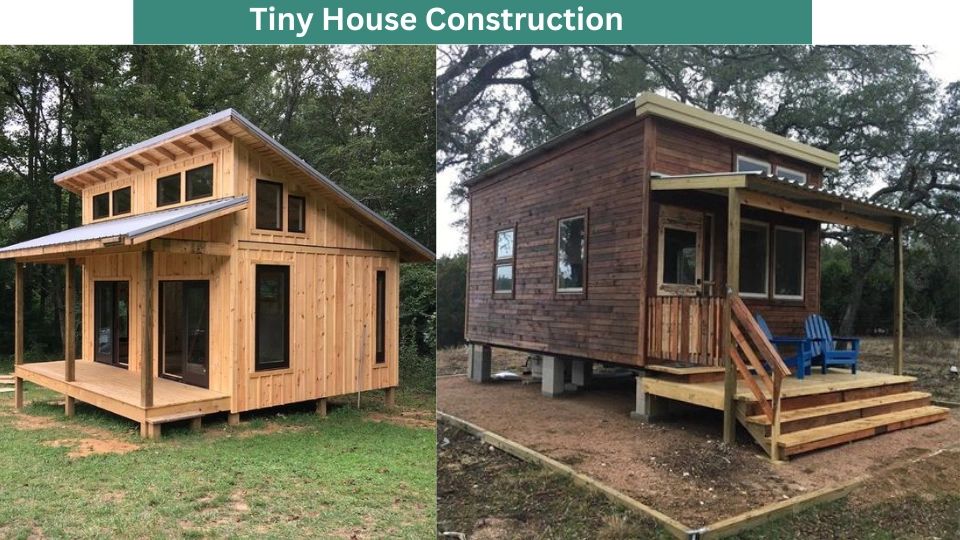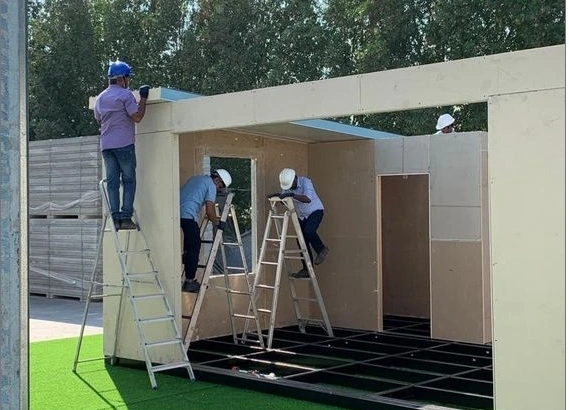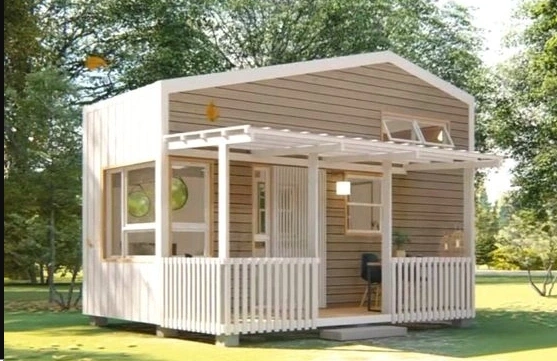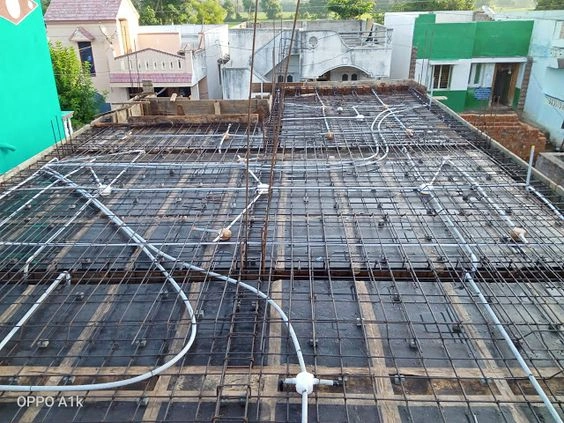When it comes to selecting exterior finishes for a tiny house, there are numerous options available, each offering its own unique characteristics and aesthetics.
Vinyl Siding: Vinyl siding is a cost-effective and low-maintenance option for tiny houses. It is available in various colors and styles, including options that resemble wood siding. Vinyl is durable, resistant to rot, and requires minimal upkeep. It is easy to clean and does not require painting.
However, some individuals may find vinyl siding less visually appealing compared to natural materials, and extreme temperatures or hail can cause damage to the panels.
Metal Cladding: Using metal panels such as corrugated steel or aluminum can lend a contemporary and stylish appearance to a small dwelling. Metal cladding is characterized by its strength, lightweight nature, and ease of maintenance. It exhibits excellent resilience against various weather conditions and offers a variety of color options and styles.
Opting for metal cladding is ideal for those seeking a modern or industrial aesthetic. However, it is important to note that metal cladding tends to be relatively more expensive compared to alternative options and may require adequate insulation to prevent heat loss and water penetration.
Wood Siding: Wood siding is a timeless choice that imparts a natural and classic appearance to a tiny house. Commonly used woods such as cedar, cypress, or pine are preferred due to their durability and resistance to decay.
Wood siding can be stained, painted, or left untreated to showcase its natural beauty. It provides good insulation properties and is relatively easy to install or repair. However, regular maintenance such as sealing, staining, or repainting is necessary to protect it from moisture and weathering.
Composite Materials: Durable and low-maintenance composite materials, such as fiber cement siding or engineered wood, are gaining popularity. Fiber cement siding is composed of cement, sand, and cellulose fibers, making it resistant to fire, insects, and rot.
Engineered wood siding is made from wood fibers and resins, resembling real wood but offering greater strength and stability. Typically, these composite options come pre-finished and can emulate traditional wood siding while offering enhanced resistance to water and weather.
When deciding on an exterior finish for a tiny house, it is essential to consider factors such as budget, climate conditions, maintenance requirements, and desired aesthetics.
Additionally, local building codes and regulations may impose specific requirements for exterior materials. Evaluating the pros and cons of each option will facilitate the selection of the most suitable exterior finish for the tiny house project.
Interior Finishes
When it comes to building tiny houses, there are different kinds of flooring to choose from:
Hardwood: Hardwood floors are classic and strong. They last a long time and can be redone to look new again. You can pick from many types of wood, colors, and finishes. They also offer natural insulation properties, keeping your home cozy.
Laminate: Laminate floors are a cheaper option that still looks like hardwood. They’re easy to put in, don’t need much upkeep, and come in lots of designs. They’re great for high-traffic areas and offer waterproof, affordable, and resilient qualities.
Vinyl: Vinyl floors are waterproof and tough. They can look like wood or stone and hold up well even in busy areas. They offer natural insulation properties, keeping your tiny house comfortable.
Cork or Bamboo: If you want to be eco-friendly, you can go for cork or bamboo floors. They’re good for the environment, renewable, and keep your home cozy. They also offer natural insulation properties, helping to regulate the temperature of your tiny house.
Cabinetry:
In tiny house construction, there are different options for cabinets:
Laminate: Laminate cabinets are a smart choice if you’re on a budget. They come in many colors and styles, and they’re resistant to water, which is good for tiny house kitchens and bathrooms.
Wood: Wooden cabinets are a classic pick, giving a cozy and natural look. You can choose from types like maple, oak, or birch, and paint or stain them to match your style.
Open Shelving: Open shelves make your tiny house feel more spacious and light. They’re great for storing things you use every day, and you can make them from wood, metal, or glass.
When picking what goes inside your tiny house, think about how long it’ll last, how easy it is to keep clean, how it looks, and how it fits with the rest of your design.
Since space is limited, use clever storage ideas like built-in cabinets or furniture that does more than one job. These choices will help you make a tiny house that’s both practical and nice to live in.
Insulation and Energy Efficiency
Effective insulation is very important in making tiny houses energy efficient and comfortable to live in. Since tiny houses are small, they can quickly get too hot or too cold, so good insulation is crucial for keeping the temperature just right inside.
Insulation helps to stop heat from escaping through the walls, floors, and roof, which saves energy and stops the house from getting too hot or too cold. It also stops problems like drafts, condensation, and moisture buildup, which can make the house uncomfortable and cause mold and bad air quality.
By using good insulation materials and techniques, people who own tiny houses can make sure the inside stays at the right temperature without needing to use lots of heating or cooling. This means they use less energy, pay less for utilities, and have a warm and cozy home all year round.
